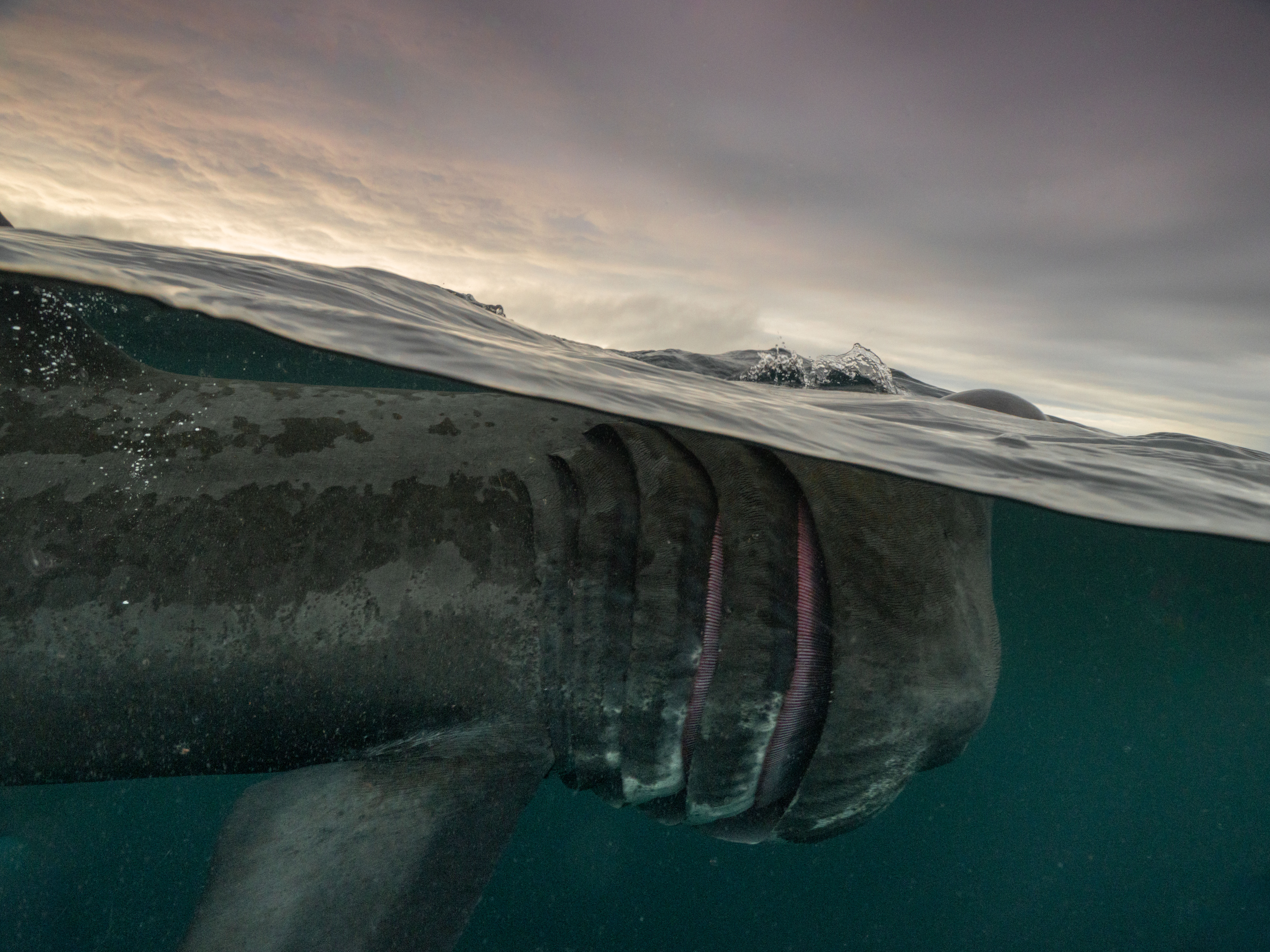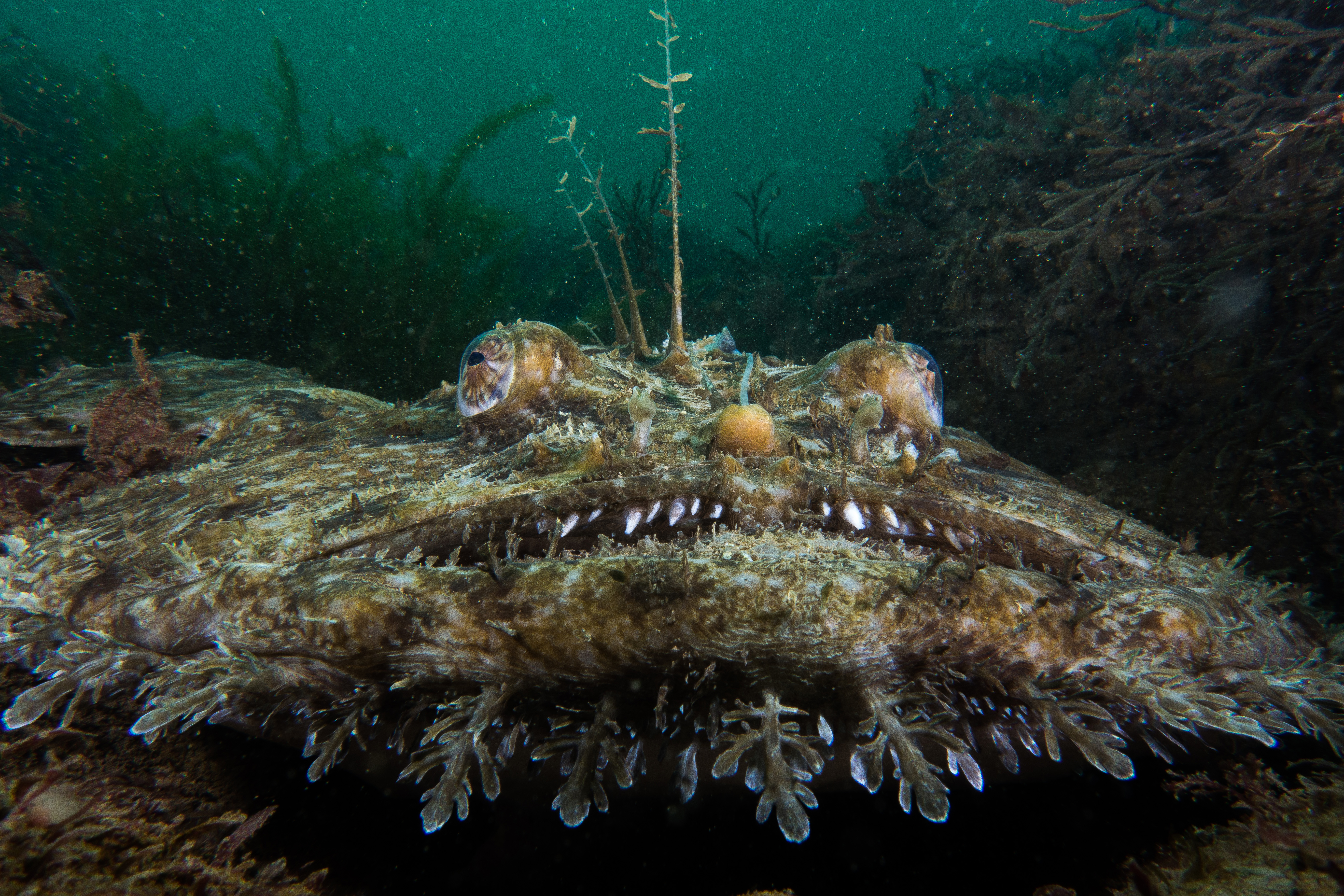Snorkeller captures epic close-up photo of a 30-foot shark!
Unbelievable underwater photographs commemorate World Wildlife Day

Today is World Wildlife Day, established by the United Nations to celebrate the planet's rich diversity of wild animals and plants. To commemorate the day, the Marine Conservation Society has compiled a collection of incredible ocean photography.
The images were all captured in the waters of the United Kingdom, featuring marine life native to British territories. The most stunning shot of the selection was taken by snorkeller diver Mark Kirkland, of a basking shark on the Isle of Coll in Scotland (pictured above).
• The best underwater and waterproof cameras are your best friends for taking marine photographs
"Through late summer the basking shark passes through the Isles of Coll and Tiree in huge numbers on its migratory journey north," said Kirkland, who captured the image on an Olympus OM-D E-M5 Mark II.
"Despite being the second largest fish in the sea (up to nine meters long) and a close relative to the great white shark, it's completely harmless, with a preference for microscopic plankton as its food. This split shot was taken on a glorious evening's snorkel with three large individuals."

Disproving the misguided notion that the best Micro Four Thirds cameras are not good in low light conditions, fellow OM shooter Dan Bolt used the original Olympus OM-D E-M1 to photograph a stunning firework anemone (above).
"As the UK's biggest anemone, the firework anemone can have a stalk and tentacles of up to 30cm long. Usually restricted to deeper waters, in many western Sea Lochs in Scotland they are accessible to sport divers," he notes.
Get the Digital Camera World Newsletter
The best camera deals, reviews, product advice, and unmissable photography news, direct to your inbox!
"These beautiful creatures also have a party trick: under UV light they fluoresce and emit blue and green light and display patterns not seen under daylight."

A nightmare-inducing angler fish was captured in all its glory by Jon Bunker (above), using one of the best compact cameras, the Sony RX100, on England's south coast in Dorset.
"Among the most beautiful of our ground-dwelling fishes, the angler fish's mottled brown tones and leafy protrusions of skin make it almost undistinguishable from the rocky, weed-strewn ground that divers often encounter them in," he said, being somewhat more charitable about the fish's looks.
"Broad circular pectoral fins seem to grip the seabed like clasping hands on either side of the massive, dustbin-lid head. Ahead of a decreasing series of weed-like dorsal spines, the anglerfish wafts its distinctive lure or 'illicium' to entice unwary prey into its cavernous mouth."

The Marine Conservation Society fights for cleaner, better-protected, healthier seas. Campaigning for improved laws to protect the ocean, the charity hopes to shine a light on its wild and wonderful inhabitants.
For divers and snorkellers, its Seasearch program is a wonderful way to give back and explore the UK's waters; volunteers conduct underwater surveys, providing an insight into the state of the UK's seas. You can learn more about the program, and how to get involved, by visiting www.seasearch.org.uk.






James has 22 years experience as a journalist, serving as editor of Digital Camera World for 6 of them. He started working in the photography industry in 2014, product testing and shooting ad campaigns for Olympus, as well as clients like Aston Martin Racing, Elinchrom and L'Oréal. An Olympus / OM System, Canon and Hasselblad shooter, he has a wealth of knowledge on cameras of all makes – and he loves instant cameras, too.
